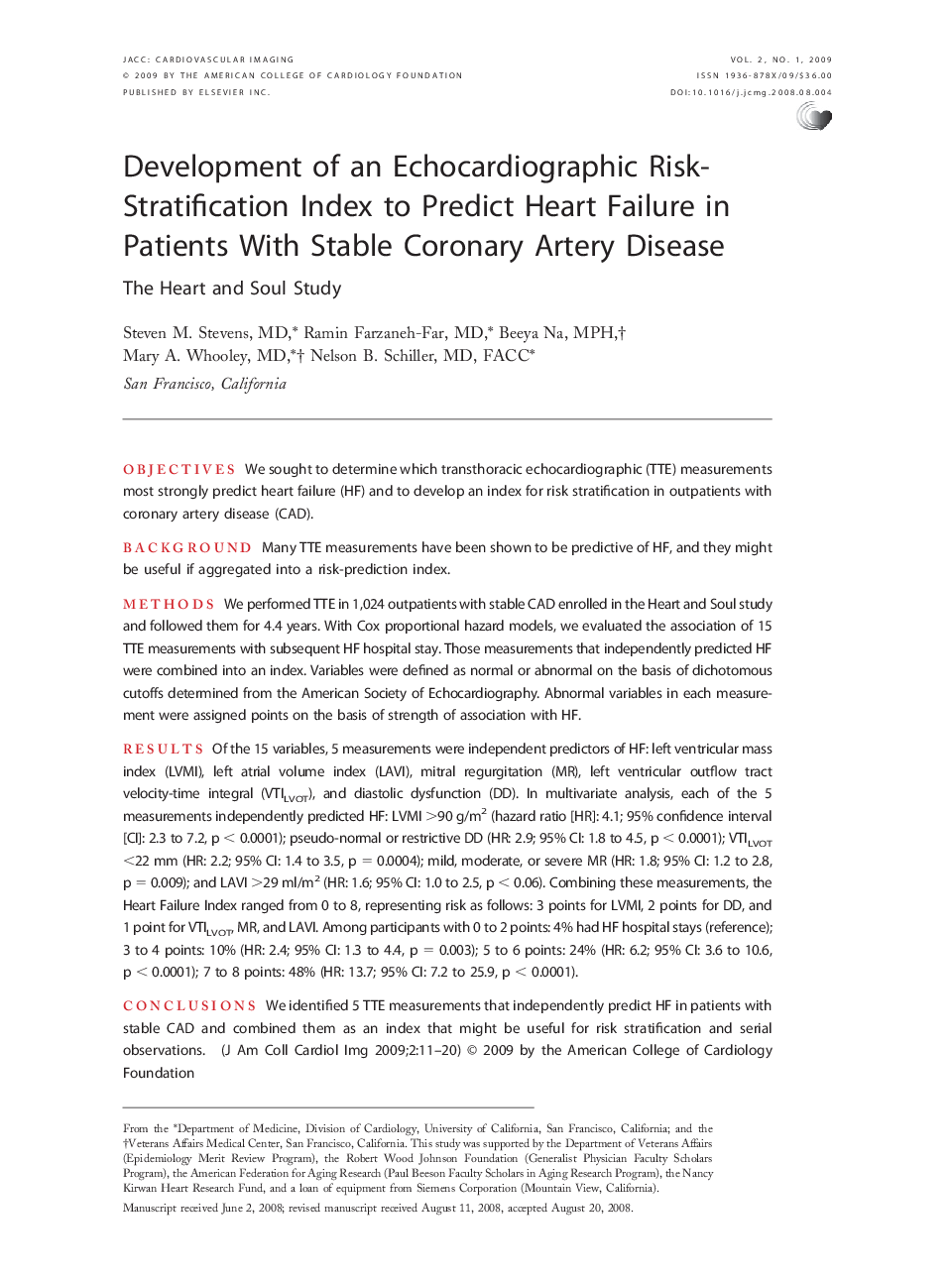| کد مقاله | کد نشریه | سال انتشار | مقاله انگلیسی | نسخه تمام متن |
|---|---|---|---|---|
| 2939328 | 1176983 | 2009 | 10 صفحه PDF | دانلود رایگان |

ObjectivesWe sought to determine which transthoracic echocardiographic (TTE) measurements most strongly predict heart failure (HF) and to develop an index for risk stratification in outpatients with coronary artery disease (CAD).BackgroundMany TTE measurements have been shown to be predictive of HF, and they might be useful if aggregated into a risk-prediction index.MethodsWe performed TTE in 1,024 outpatients with stable CAD enrolled in the Heart and Soul study and followed them for 4.4 years. With Cox proportional hazard models, we evaluated the association of 15 TTE measurements with subsequent HF hospital stay. Those measurements that independently predicted HF were combined into an index. Variables were defined as normal or abnormal on the basis of dichotomous cutoffs determined from the American Society of Echocardiography. Abnormal variables in each measurement were assigned points on the basis of strength of association with HF.ResultsOf the 15 variables, 5 measurements were independent predictors of HF: left ventricular mass index (LVMI), left atrial volume index (LAVI), mitral regurgitation (MR), left ventricular outflow tract velocity-time integral (VTILVOT), and diastolic dysfunction (DD). In multivariate analysis, each of the 5 measurements independently predicted HF: LVMI >90 g/m2 (hazard ratio [HR]: 4.1; 95% confidence interval [CI]: 2.3 to 7.2, p < 0.0001); pseudo-normal or restrictive DD (HR: 2.9; 95% CI: 1.8 to 4.5, p < 0.0001); VTILVOT <22 mm (HR: 2.2; 95% CI: 1.4 to 3.5, p = 0.0004); mild, moderate, or severe MR (HR: 1.8; 95% CI: 1.2 to 2.8, p = 0.009); and LAVI >29 ml/m2 (HR: 1.6; 95% CI: 1.0 to 2.5, p < 0.06). Combining these measurements, the Heart Failure Index ranged from 0 to 8, representing risk as follows: 3 points for LVMI, 2 points for DD, and 1 point for VTILVOT, MR, and LAVI. Among participants with 0 to 2 points: 4% had HF hospital stays (reference); 3 to 4 points: 10% (HR: 2.4; 95% CI: 1.3 to 4.4, p = 0.003); 5 to 6 points: 24% (HR: 6.2; 95% CI: 3.6 to 10.6, p < 0.0001); 7 to 8 points: 48% (HR: 13.7; 95% CI: 7.2 to 25.9, p < 0.0001).ConclusionsWe identified 5 TTE measurements that independently predict HF in patients with stable CAD and combined them as an index that might be useful for risk stratification and serial observations.
Journal: JACC: Cardiovascular Imaging - Volume 2, Issue 1, January 2009, Pages 11–20